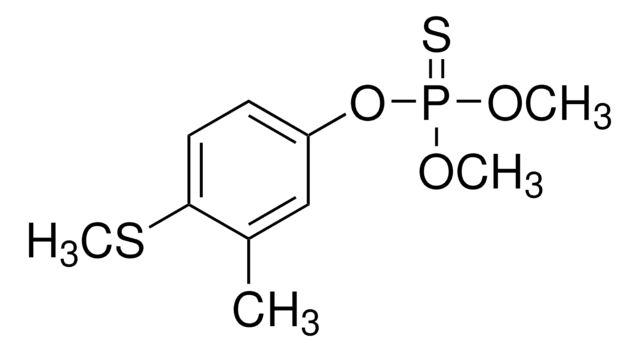CRM18918
F.A.M.E. Mix
C8 - C24, certified reference material, ampule of 100 mg (Neat)
About This Item
Produtos recomendados
grau
certified reference material
TraceCERT®
Nível de qualidade
linha de produto
TraceCERT®
Certificado de análise (CofA)
current certificate can be downloaded
embalagem
ampule of 100 mg (Neat)
técnica(s)
HPLC: suitable
gas chromatography (GC): suitable
aplicação(ões)
food and beverages
Formato
mixture
grupo funcional
carboxylic acid
ester
Condições de expedição
dry ice
temperatura de armazenamento
-10 to -25°C
Categorias relacionadas
Descrição geral
Aplicação
- To determine the fatty acid content in the study to investigate the catalytic activity of Fe-exchanged montmorillonite K10 (Fe-MMT K10) in the conversion of waste cooking oil to biodiesel
- Assessment of fatty acids in the native microalgal species by gas chromatography-mass spectrometry (GC-MS) to evaluate their lipid content and biomass productivity
- Fatty acid profiling of oil extracted from grape seeds using GC-MS to study the effect of ultrasound technology on the three extraction methodologies based on low-pressure Soxhlet and Bligh Dyer, and high-pressure supercritical carbon dioxide-SFE
- To evaluate the fatty acid composition of the biodiesel obtained from the wastewater treatment high-rate algal pond (WWT HRAP) biomass using GC-FID
Outras notas
Informações legais
Analito
produto relacionado
Palavra indicadora
Warning
Frases de perigo
Declarações de precaução
Classificações de perigo
Aquatic Acute 1 - Aquatic Chronic 3
Código de classe de armazenamento
10 - Combustible liquids
Classe de risco de água (WGK)
WGK 3
Ponto de fulgor (°F)
Not applicable
Ponto de fulgor (°C)
Not applicable
Escolha uma das versões mais recentes:
Certificados de análise (COA)
It looks like we've run into a problem, but you can still download Certificates of Analysis from our Documentos section.
Se precisar de ajuda, entre em contato Atendimento ao cliente
Já possui este produto?
Encontre a documentação dos produtos que você adquiriu recentemente na biblioteca de documentos.
Os clientes também visualizaram
Nossa equipe de cientistas tem experiência em todas as áreas de pesquisa, incluindo Life Sciences, ciência de materiais, síntese química, cromatografia, química analítica e muitas outras.
Entre em contato com a assistência técnica









